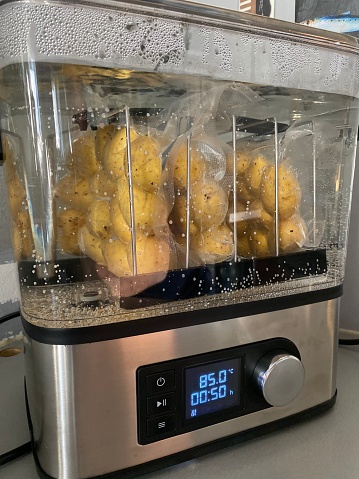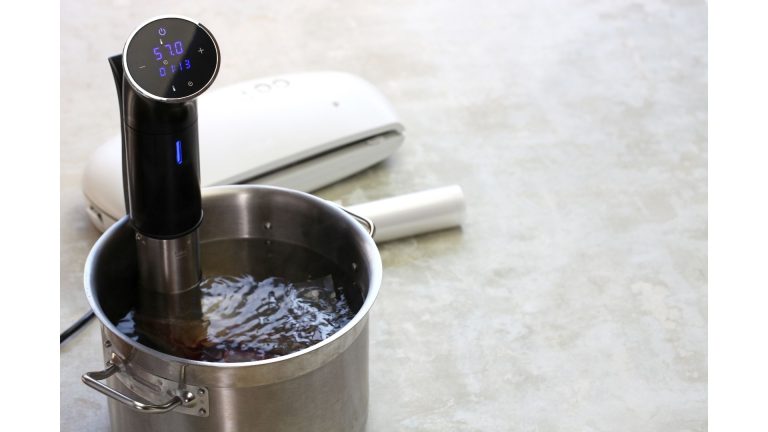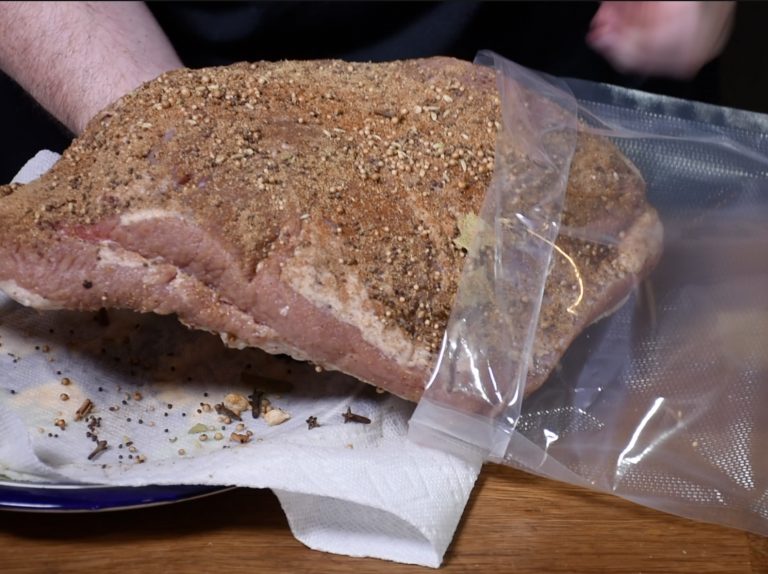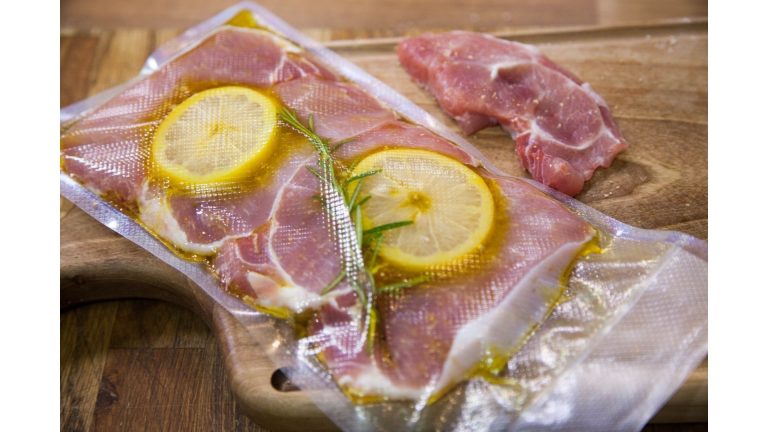Sous Vide vs. Pressure Cooking: What’s The Difference?
In this article, I’m going to explain exactly what the difference is between using a pressure cooker and sous vide cooking.
What is a Pressure Cooker? First, let’s talk about what a pressure cooker is.
A pressure cooker (also called a high-pressure cooker) is a type of slow cooker that uses high pressure to cook foods.
The pressure cooker is designed to create a vacuum inside of the pot to seal in moisture and steam.
This method of cooking allows for much more thorough cooking than other cooking methods.

Table of Contents
How Does Pressure Cooking Work?
Pressure cooking is a cooking technique that uses high temperature and pressure to cook food.
In this process, steam is forced through the food by a mechanical force rather than by the boiling or roasting method.
This type of cooking is commonly used for foods that cook quickly and easily in high heat such as poultry, seafood, pasta, grains, and vegetables.
It can be done with an electric cooker, stovetop, microwave, slow cooker, pressure cooker, or rice cooker.
In some instances, the pressure cooker may be more appropriate for certain types of foods than other methods.
It’s a great way to cook whole grains, legumes, and nuts. It also works well for baking bread, making cakes, browning meat, and creating soups and stews.
Advantages Of Using a Pressure Cooker
Pressure cooking gives us the opportunity to reduce cooking times without sacrificing any flavor or texture.
We can also pressure cook with more than one liquid at a time for delicious multi-layered results.
It also cooks food evenly so that each bite is the same as the next. Another great thing about pressure cooking is that you do not have to worry about overcooking your food.
You are only cooking it long enough to bring out its flavor and tenderize it.
When you cook under high pressure, it is very easy to avoid the dreaded “burnt” taste that comes from overcooking.
Disadvantages Of Using A Pressure Cooker
Pressure cookers are very useful for cooking, but there are several disadvantages to using them.
First of all, they can be dangerous to use. The pressure in the cooker builds up so fast that it can explode.
If you drop the pot on the floor, the pot could break and pieces could fall into the food. Also, the pressure cooker may not be easy to control.
The cooker has a high-temperature setting, so it is best to turn down the heat as low as possible before you start cooking.
Many people think that using a pressure cooker is the best way to cook food because you can cook your food quickly.
But you should also be aware of the disadvantages of pressure cooking. When food is cooked under pressure, the taste changes.
For example, food cooked under pressure becomes tasteless.
How Does Sous Vide Work?
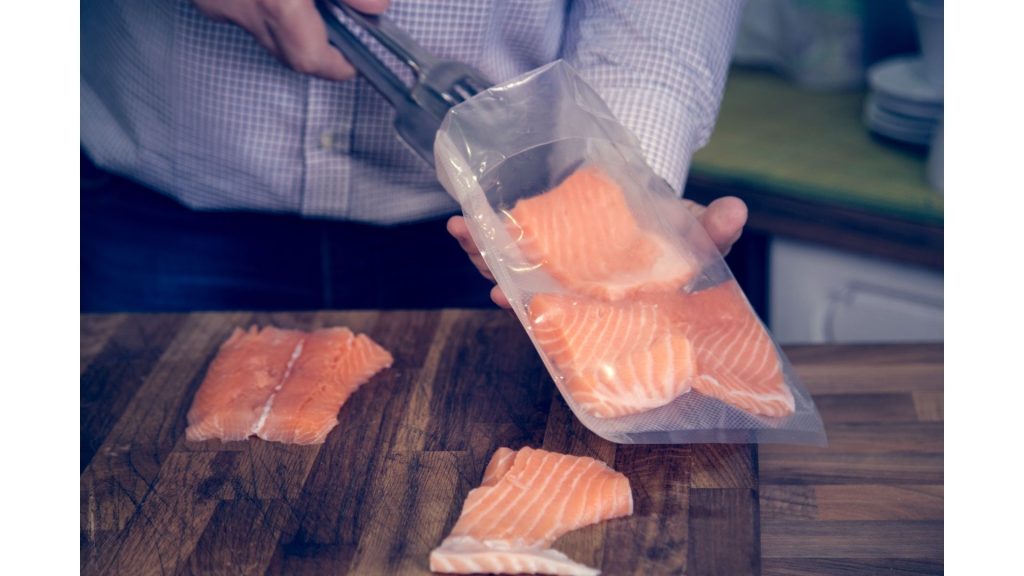
It is a fancy way of saying “cooking in a bag” in French. The main idea behind sous vide cooking is that you can cook foods at any temperature.
Foods are sealed in a bag that is vacuumed and sealed again to create a hermetically sealed bag.
Once sealed, the food is cooked in a water bath that has been heated to the desired temperature.
This allows you to cook your food anywhere from 60C to 160C (140C-320F) and it will come out great every time.
See also: What is Sous Vide?
Advantages of Using Sous Vide
Sous vide is a precise cooking that can be used for steaming, searing, braising, poaching, and even frying foods at temperatures as low as -30 degrees Fahrenheit.
The low-temperature environment is perfect for creating tender, juicy foods that are still cooked to perfection.
Advantages of using sous vide are that it is faster than other cooking methods because it is much easier to control the temperature, and if you have a thermometer you can see when the food is done.
Also, the sous vide will keep the food much healthier. There are many recipes that can be cooked sous vide.
Disadvantages Of Using a Sous Vide
For starters, you have to have access to an expensive sous vide machine.
Most people can’t afford it. Also, you need to dedicate a lot of space to this equipment.
You also need to plan your cooking time for hours in advance.
This can be an issue if your food is not evenly cooked through.
Sous Vide vs. Pressure Cooking: What’s The Actual Difference?
Pressure cooking isn’t just for recipes—it’s a whole new way to cook food at home.
For this reason, the food science world has been turning its attention to the pressure cooker—and the results are amazing!
You’re about to discover exactly why it’s a great kitchen tool.
And I’m going to explain exactly what the difference is between using a pressure cooker and sous vide cooking.
1. Cooking Temperature
Sous vide cooking is a method of cooking food by immersing it in a water bath of precisely controlled temperature.
Pressure cooking is a different form of cooking that is typically used for longer-cooking, more complicated recipes or for larger cuts of meat.
They both work by creating pressure in the sealed vessel, which allows the food to cook faster than it would at room temperature, but they do so in different ways.
In this article, we’ll discuss the difference between sous vide and pressure cooking, as well as why sous vide cooking can be a great addition to any home cook’s toolkit.
2. Desired Texture Of The Food
Foods cooked sous vide (“under vacuum”) is known as “semi-cooked” in contrast to foods cooked under pressure that have a fully cooked texture.
In this study we investigate how desired texture of semi-cooked foods is affected by heating methods (i.e., pressure cooking vs. sous vide cooking).
We use the term “desired texture” instead of “actual texture” because the latter implies that there exists some objective truth about the actual texture of food.
In our study, we aim to determine how the desirability of semi-cooked foods is affected by heating methods, and if there exists a point where pressure cooking and sous vide cooking result in equally preferred food.
3. Time Required
As you probably know, cooking with a Sous Vide machine is a whole lot different than traditional cooking methods.
There is no preheat or pre-cook time involved in a Sous Vide process, making the method ideal for long-term cooking.
In fact, a slow cook Sous Vide process is a great way to create a rich and flavorful dish with minimum effort and maximum results.
However, while there are many advantages to a Sous Vide machine, there is one major downside to the technology: the lengthy prep time.
Frequently Asked Questions
How To Sous Vide Without A Sous Vide Cooker?
The sous vide cooker can be quite costly. A basic model can be more expensive than a standard pressure cooker.
This is why it is rarely found in a home’s kitchen.
If you don’t want to spend money on a new kitchen gadget, the methods below will show you how to cook sous vide without one.
What You’ll Need to Know
The primary goal of the sous vide cooking gadget is to maintain water temperature uniformity.
If you want to try your hand at DIY sous vide cooking, you’ll need a large pot, a few Ziploc bags, a few binder clips, and an oven thermometer to keep track of the temperature.
Can You Put Frozen Food in Sous Vide?
Yes, but it will take a while. Frozen food is not suitable for sous vide because it contains ice crystals and these can form if the food gets too hot.
Ice crystals are like tiny pinholes and they allow water vapor to escape the food.
When this happens, you end up with a lot of water in your bag and that’s why you have to wait a few hours until it has all melted away.
But the way you cook sous vide doesn’t matter at all.
Conclusion
When it comes to food preparation, it’s always great to have options. Whether you’re looking to cut calories or just want to make sure you get the best tasting food possible, cooking in various methods is an essential skill to master.
But there are a lot of different methods you can use to prepare your food. And each method has its own benefits and drawbacks. So it can be a little confusing when you have so many choices.

Foodie and a passionate cook, I am here to share all of what I know about cooking, kitchen, and food prepping.
Follow me for delicious and healthy recipes.
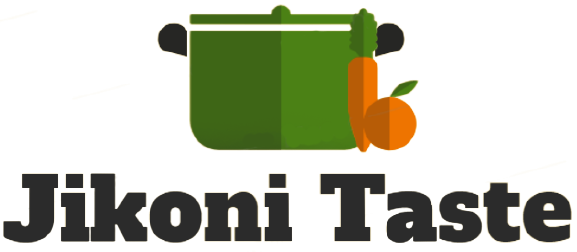
![Best Steak Cut for Sous Vide [Guide]](https://jikonitaste.com/wp-content/uploads/2022/02/best-steak-cut-for-sous-vide-768x432.jpg)
